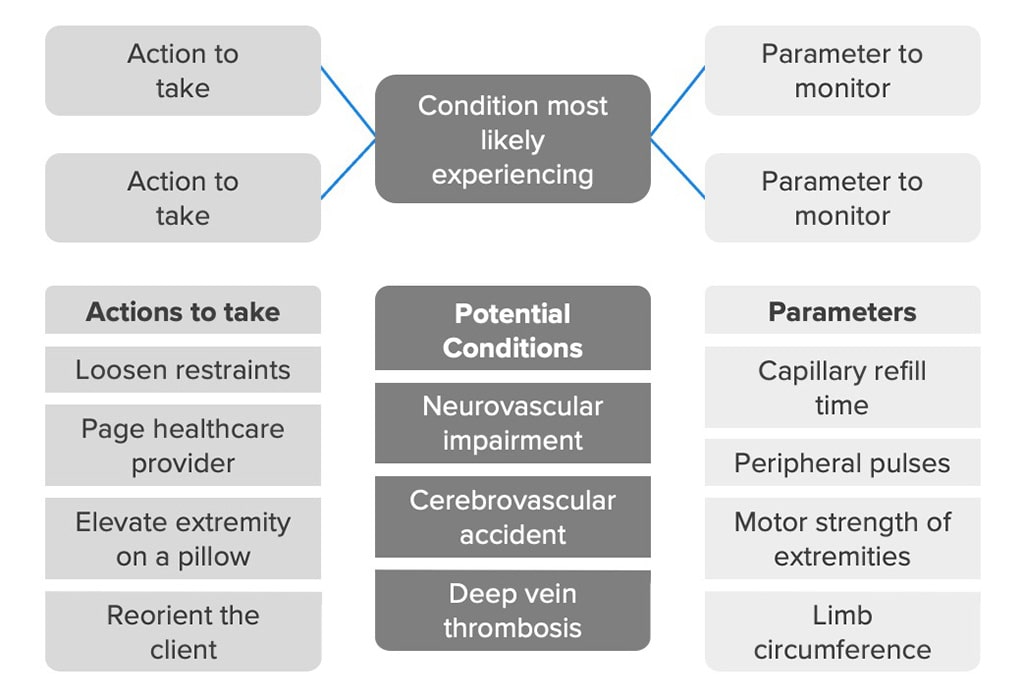By Emily N. Giddings, MSN, RN, CNE, CCRN
All students taking the NCLEX® after April 2023 will be tested using the new NCLEX Next Generation exam. This deadline may seem far away, but this means that students graduating in Spring 2023 will be tested with the Next Generation NCLEX (NGN) that follows the NGN test plan. In most traditional, four-semester pre-licensure programs, these students have already matriculated. Faculty agree that NCLEX preparation should start sooner rather than later and some programs start as early as the first term (Davis & Morrow, 2021). But, when is the right time?
The short answer: as early as possible! As we discussed in an earlier article on test practice strategies, the sooner that a student starts engaging in practice review, the longer their duration of practice and the more opportunity they have to reinforce prior learning (Kim et al., 2019). NCLEX®-style teaching and learning exercises not only prepare students for the exam itself, but they also do double-duty as an active learning strategy to reinforce nursing knowledge in general. Retention already heavily depends on application of knowledge, so why not help students retain new knowledge NCLEX-style?
The National Council of State Boards of Nursing (NCSBN, 2020) new Clinical Judgment Measurement Model (CJMM) offers a perfect framework to guide development of some teaching and learning exercises. Here are some examples of how you might incorporate Next Generation NCLEX practice strategies into your curriculum:
Application Strategies
- Using class time to walk through unfolding case studies offers students the opportunity to think critically and apply new knowledge in the context of actual patient scenarios. Use the CJMM to structure your unfolding case as it moves sequentially through all six steps from “Recognizing Cues” to “Evaluating Outcomes.”
- Are you in a virtual or asynchronous setting that doesn’t support live case studies? You can still use the CJMM to frame your lecture material. Don’t only teach your students about the adverse effects of antihypertensives, for example, but include in your lecture the nursing implications this knowledge has in clinical practice. Simply knowing that lisinopril might cause hypotension doesn’t automatically translate to the skilled know-how that tells your student to implement fall precautions or avoid administering the medication if the patient is already hypotensive.
- Of course, NCLEX-style practice questions such as those in the UWorld QBanks will offer your students the most specific form of practice for the NGN, as this is the best representation of the actual testing environment. Use a question bank that allows you to create assignments on specific subjects. For example, you can create a class assignment in UWorld’s Learning Platform on “Nursing Fundamentals,” or you can refine your selection further to focus specifically on “Safety and Infection Control” or other first-semester principles. In January 2022, UWorld introduced Next Generation NCLEX® Items for their Nursing QBanks, including over 300 Next Gen practice questions that can be used for individual, group, or classroom assignments.
Keep it short
If these strategies seem too complex or aren’t feasible for whatever reason, consider designing some NGN-style “standalone” items. Standalone items are designed to assess students’ understanding of one or more steps of the CJMM in a single test question (NCSBN, 2021). One standalone item type, the Bow-tie item, covers all six steps by simply proposing a scenario and asking the student to select which condition the client is most likely experiencing, which two actions are most appropriate, and which two parameters are most useful to monitor.
Not only do standalone items simplify your test-creation process, but they also have the flexibility to scale up or down in complexity depending upon the students’ level. For example, a first-semester student may not need a six-part case study to reinforce knowledge of restraint use. A Bow-tie item measuring clinical judgment for safe restraint use might provide the student with assessment data for a restrained client who becomes combative and is found to have a cool, pale extremity. The student would then use this assessment data to complete the following diagram:

This same item type can easily be adapted to focus on any content area. You can even display such an item in the classroom and use live polling to engage students in an active learning exercise.
Don’t be overwhelmed!
Remember that preparing your students for the Next Generation NCLEX doesn’t require a complete overhaul of your classroom. The CJMM is simply a tool to measure clinical judgment, and sound clinical judgment has always been the basis for nursing practice. Since the NCLEX® is based on the NCSBN’s survey of actual nursing practice, this means that in the case of nursing, it’s okay to “teach for the test,” because teaching for the test is just teaching for nursing practice itself. Use these strategies to give your students ample opportunity to prepare for both.
UWorld’s Learning Platform for Nursing was developed by nursing educators and practicing nurses in a way designed to build critical reasoning and critical thinking skills. The assignable questions, detailed answer explanations, vivid illustrations and images, and performance tracking do more than just improve a program’s NCLEX-RN or NCLEX-PN pass rates — they build student confidence, increase learning opportunities, and help prepare the next generation of nurses for a safe, accurate, and fulfilling career in nursing. And now, you have the ability to create presentations or assignments using Next Gen case studies, traditional questions, or a mix of both.
If you have any questions or want to see a personal demo of UWorld’s Learning Platform for Nursing, contact [email protected].
References
Davis, J. H., & Morrow, M. R. (2021). Professional preparation: Faculty practices for NCLEX-RN success. Nursing Science Quarterly, 34(4), 360–365. https://doi.org/10.1177/08943184211031581
Kim, A. S., Wong-Kee-You, A. M., Wiseheart, M., & Rosenbaum, R. S. (2019). The spacing effect stands up to big data. Behavior Research Methods, 51, 1485–1497. https://doi.org/10.3758/s13428-018-1184-7
National Council of State Boards of Nursing. (2020). The NGN case study. Next Generation NCLEX News, Spring 2020, 1–7. https://www.ncsbn.org/NGN_Spring20_Eng_02.pdf
National Council of State Boards of Nursing. (2021). Next generation NCLEX: Stand-alone item types. Next Generation NCLEX News, Spring 2021. https://www.ncsbn.org/NGN_Spring21_Eng.pdf





